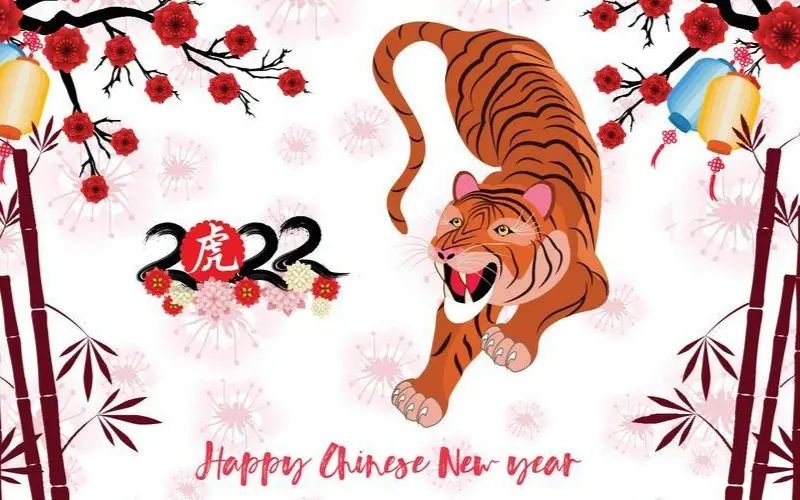Chinese New Year, an exuberant tapestry of cultural heritage, is celebrated with unparalleled zeal across the globe. Each lunar cycle, this festive occasion signifies not only the passage of time but also the embodiment of mythology, familial cohesion, and the profound interconnection between traditions and symbolism. In the year 2025, the spotlight will shine on the majestic Tiger, an animal imbued with characteristics that resonate deeply within the cultural psyche of Chinese society.
The Year of the Tiger, heralding from the Chinese Zodiac, emerges as a potent symbol of courage, power, and unpredictability. In a cultural relativism perspective, the Tiger can be examined through the lens of varying sociocultural paradigms, revealing a multifaceted appreciation of its symbolism and the associated traditions that unfold annually.
As the festivities commence, the preparatory rituals serve as a fundamental bridge connecting past to present. Prior to the New Year’s Day, households are meticulously cleaned, which signifies the expulsion of misfortune and the welcoming of good luck. This act can be interpreted as a metaphorical shedding of the skin, akin to the way a snake renews itself, aligning itself with the transformative essence attributed to the Tiger. In many cultures, cleansing rituals are prevalent, underscoring a universal desire for renewal and the promise of hope.
The intricate tapestry of New Year traditions encompasses a plethora of customs, among which the Reunion Dinner holds a pivotal place. On this evening, families converge, often travelling great distances to partake in a lavish feast. The symbolism of abundance is rife within the meal, as foods like fish, dumplings, and glutinous rice cakes are not only delicious but are emblematic of prosperity, unity, and continuity. Each dish bears significance, transforming the dinner table into a microcosm of familial bonds that transcend geographical barriers. The importance of familial togetherness is a trait shared across myriad cultures, illustrating the universal yearning for kinship and belonging.
Upon the dawn of the New Year, vibrant festivities erupt, commencing with the illustrious Dragon and Lion dances. These performances symbolize strength, bravery, and auspiciousness. The rhythmic beats of drums resonate through the air, much like the fervent heartbeat of a nation, invoking the spirit of the Tiger. The roar of the Lion dance, akin to the growl of the Tiger, is a potent reminder of the cultural motifs prevalent in both urban and rural landscapes. Through cultural relativism, these performances can be appreciated not only as entertainment but as profound expressions of collective identity and resilience against adversities.
In addition to dance, the use of firecrackers during the New Year festivities serves as a cultural hallmark. The poignant crackle resounds like the fierce roar of the Tiger, historically intended to ward off evil spirits. In this context, the symbolism of sound transcends mere auditory pleasure; rather, it becomes a ritualistic means of safeguarding communities from malevolence. This practice mirrors similar rites in various cultures, wherein noise and celebration are employed to expel darkness, showcasing a universal coping mechanism against the unknown.
The symbolic intricacies of red envelop the landscape of Chinese New Year. Red lanterns, couplets, and envelopes signify luck and prosperity. The color, potent in its vibrancy, serves as a reminder of the enduring hope that accompanies the arrival of spring. In the context of cultural relativism, color symbolism often varies dramatically across societies. What is deemed auspicious in one culture may have altogether different associations elsewhere. The prevalence of red in Chinese tradition invites scholars to further ponder the implications of cultural symbolism in contrasting contexts.
An inextricable element of the New Year celebration is the giving of red envelopes, or “hongbao.” The exchanging of these envelopes, often containing monetary gifts, embodies goodwill and the transmission of fortune from the elder generation to the younger. This tradition delineates respect for hierarchy and familial structures, reflecting a salient value within Confucian thought that permeates many East Asian societies. Cultural relativism enables a deeper understanding of such traditions; it prompts the acknowledgment of diverse expressions of respect and familial dutifulness globally.
Moreover, the themes associated with the Tiger extend beyond individual customs to encompass broader philosophical concepts related to fortune and fate. The belief in destiny is a prevalent notion within Chinese culture, characterized by the duality of determinism and agency. The Tiger’s tenacity in overcoming obstacles symbolizes what is deemed as the potential within individuals to navigate life’s vicissitudes. This dialectic can be contrasted with Western traditions that often emphasize individualism and self-determination, showcasing how varying worldviews can shape responses to fortune and adversity.
As the Year of the Tiger unfolds, the granular intricacies of traditions and symbolism offer a prism through which one can explore the essence of a culture steeped in reverence for history, familial ties, and communal aspirations. Engaging with these rich practices from a cultural relativism perspective elucidates not only the uniqueness of Chinese New Year traditions but also emphasizes the interconnectedness shared among communities. In a rapidly globalizing world, the celebration serves as a poignant reminder of the diverse forms in which cultures express their values, hoping to steer humanity toward understanding, compassion, and shared prosperity.
